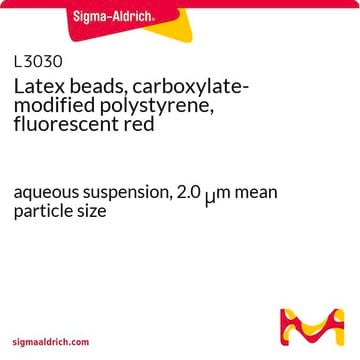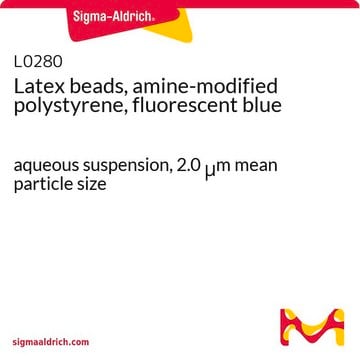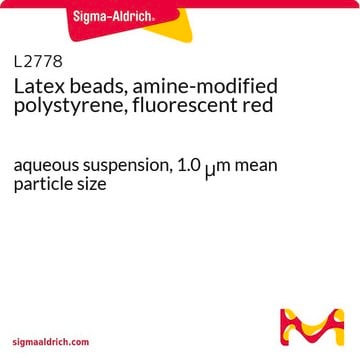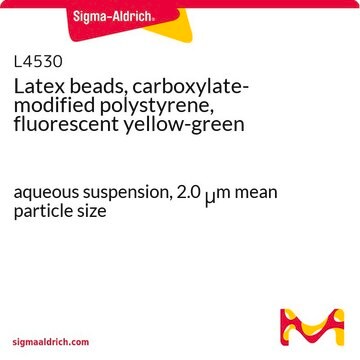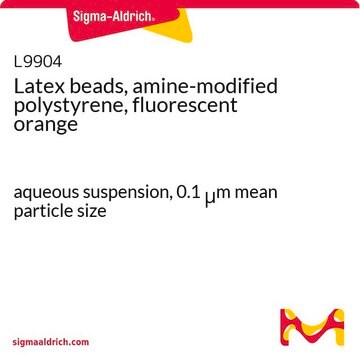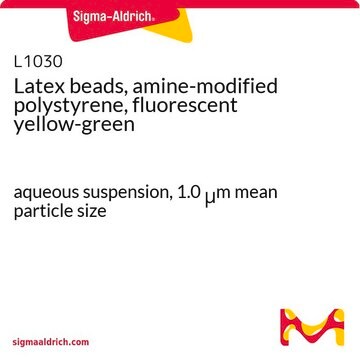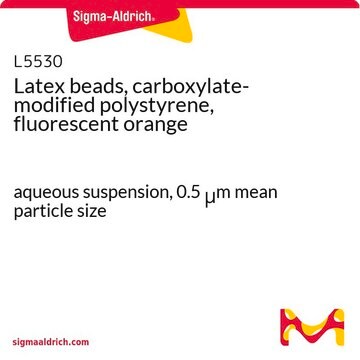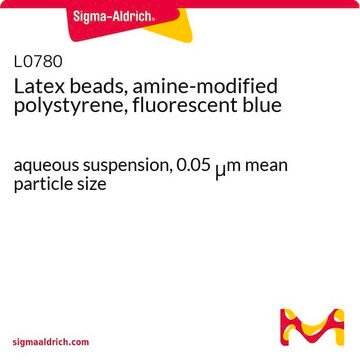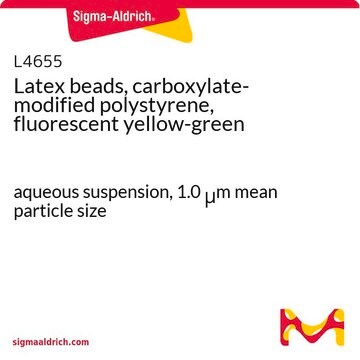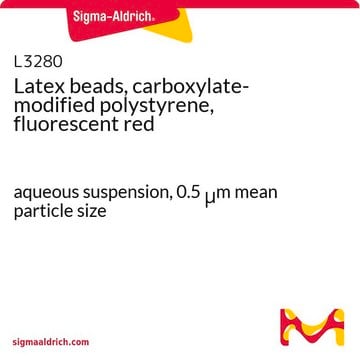The excitation range for this product is 470 nm to 525 nm, and the emission range is 535 nm to 650 nm.
L9529
Latex beads, amine-modified polystyrene, fluorescent orange
aqueous suspension, 2.0 μm mean particle size
Scegli un formato
CHF 75.10
Scegli un formato
About This Item
CHF 75.10
Prodotti consigliati
Stato
aqueous suspension
Composizione
Solids, 2.4-2.6%
Dimens. media particelle
2.0 μm
Fluorescenza
λex ~520 nm; λem ~540 nm
Cerchi prodotti simili? Visita Guida al confronto tra prodotti
Applicazioni
Azioni biochim/fisiol
Codice della classe di stoccaggio
10 - Combustible liquids
Classe di pericolosità dell'acqua (WGK)
WGK 3
Punto d’infiammabilità (°F)
Not applicable
Punto d’infiammabilità (°C)
Not applicable
Scegli una delle versioni più recenti:
Possiedi già questo prodotto?
I documenti relativi ai prodotti acquistati recentemente sono disponibili nell’Archivio dei documenti.
I clienti hanno visto anche
-
The specified output emission is 540nm, which is green. However, the beads are labelled "yellow to orange". When exciting with green I detect fluorescence at 600nm on my spectrometer, which is yellow to orange. Is 540 the actual expected emission? or 600?
1 answer-
Helpful?
-
Active Filters
Il team dei nostri ricercatori vanta grande esperienza in tutte le aree della ricerca quali Life Science, scienza dei materiali, sintesi chimica, cromatografia, discipline analitiche, ecc..
Contatta l'Assistenza Tecnica.